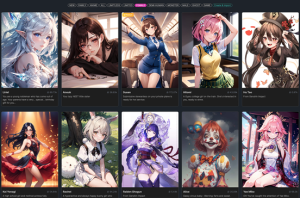Introduction to AI in Anime
Artificial intelligence is revolutionizing various industries, including entertainment. Specifically, in the anime industry, AI technologies are enabling creators to develop more diverse and inclusive narratives. By analyzing extensive data on audience preferences and social trends, AI tools help studios to craft stories that resonate with a wider demographic.
Enhancing Character Diversity with AI
AI tools contribute to the creation of a broader range of characters in anime narratives. By utilizing machine learning algorithms, creators can ensure representation of various cultures, ethnicities, and identities in their stories. This not only promotes inclusivity but also enriches the storytelling experience by introducing varied perspectives and backgrounds.
Detailed Character Analytics
AI's ability to process vast amounts of demographic and psychographic data allows studios to understand which character traits appeal to different segments of their audience. For example, an AI analysis might reveal that characters who are resilient and emotionally complex tend to resonate more with audiences aged between 18-34 years. Utilizing such insights, studios can create characters that are not only diverse but also deeply relatable to their target viewers.
Plot Development and Inclusivity
AI also plays a critical role in plot development. By leveraging predictive modeling, AI can suggest story arcs that are likely to engage a broader audience. This involves integrating themes of social justice, equality, and representation seamlessly into the plot, enhancing the narrative's appeal without compromising the story's integrity.
Predictive Success Metrics
To ensure the effectiveness of inclusive narratives, AI employs predictive analytics to forecast the success of certain themes before they are fully developed. For instance, AI tools might analyze past successful anime series that focused on themes like gender equality or racial diversity and predict the potential success rate of similar future projects. This not only helps in fine-tuning the narrative but also in allocating resources more efficiently, optimizing both creative output and budgetary expenditures.
Challenges and Opportunities
While AI significantly contributes to the development of inclusive anime narratives, it also presents certain challenges. The key is to maintain a balance between AI-driven suggestions and human creativity to ensure that the stories remain authentic and engaging.
Addressing AI Limitations
It's crucial to address the limitations of AI, such as over-reliance on data which might lead to repetitive or formulaic storylines. To combat this, creators must integrate AI insights with creative storytelling techniques to produce unique and compelling anime narratives.
Conclusion
In conclusion, AI's influence in the anime industry is a powerful force for fostering inclusivity. By analyzing detailed character analytics and aiding in plot development, AI not only enriches the narrative experience but also ensures that anime continues to be a dynamic and inclusive medium. However, balancing AI integration with human creativity is essential to maintain the originality and emotional depth of anime storytelling.
For more on AI's role in anime, consider exploring how AI technologies are transforming media at ai anime.
